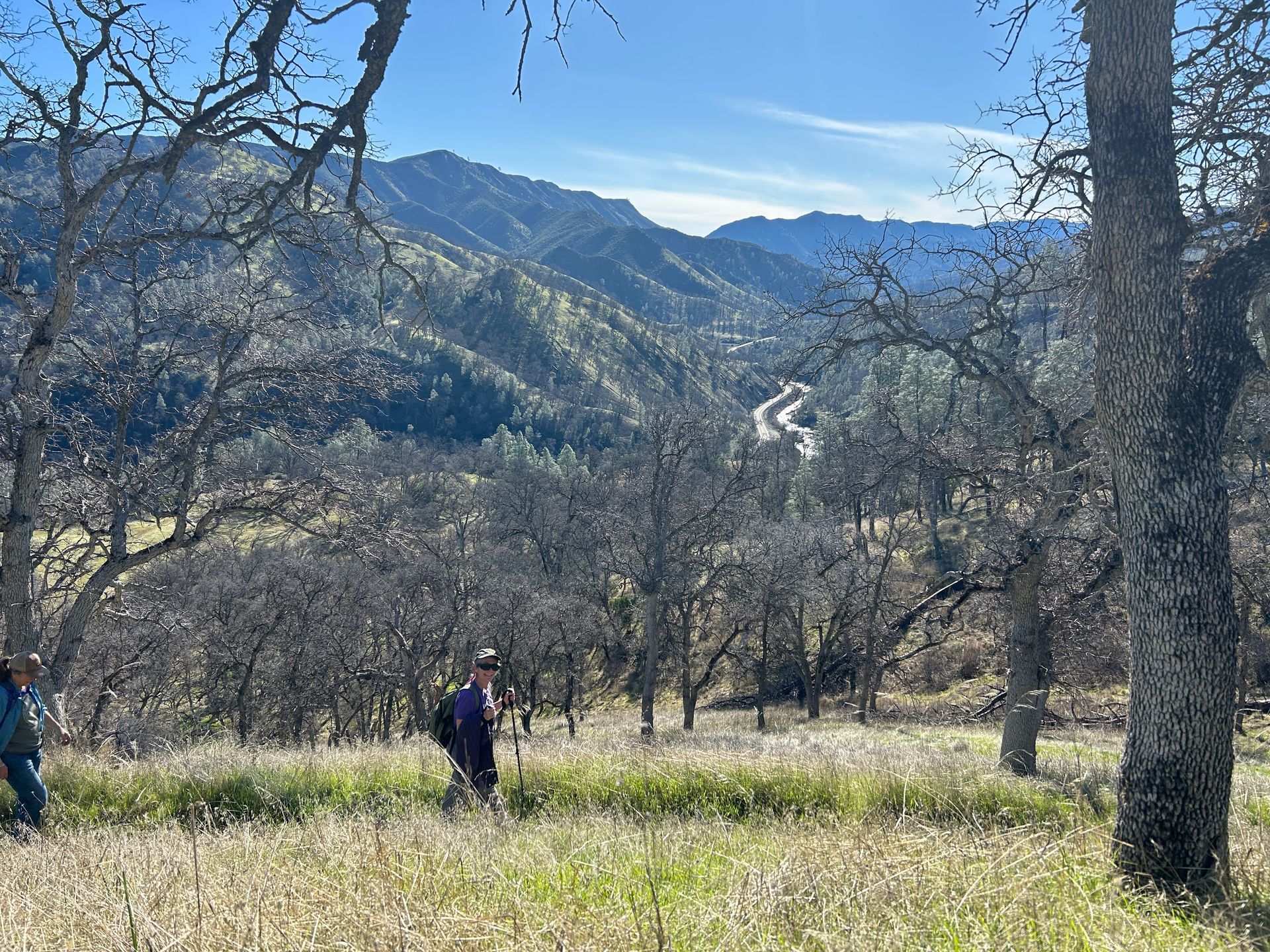Monumental Questions - Monumental Oaks

California is host to over twenty native oak species and you can find at least five of those species within the Berryessa Snow Mountain National Monument (the Monument). In fact, you can find all five of those species on the short five mile Frog Pond hike!
California’s native oak species fall into three categories; Red Oaks, White Oaks and Golden Cup (also called intermediate) Oaks. The Red and White oaks are categorized as such based on the color of their wood. The Red Oak group includes Black Oaks (probably best known for its stunning fall foliage), Interior Live Oak and Coastal Live Oaks, both of which are evergreen. The White Oak group includes the nation’s largest oak - the Valley Oak, the Blue Oak - California’s most numerous oak species, Oregon Oak as well as two shrub species the Leather Oak and Scrub Oak. Both of these shrub species occur in Chaparral habitat which is found throughout the Monument but Leather Oaks occur exclusively on serpentine soils (also found within the Monument!). Golden Cup Oaks include Canyon Live Oaks and Huckleberry Oaks. Canyon Live Oak and Interior Live Oak ranges do overlap but Canyon Live Oaks can be identified by the golden hairs on the undersides of their leaves and Huckleberry Oaks are found in the Sierra Nevada.
Water is necessary for normal cellular structure and function (like when you forget to water the plant outside your front door during a heat spell and it wilts dramatically). Water is also necessary to transport minerals such as nitrogen, phosphorus and potassium from the soil to the leaves. Living in our region of California, we don’t typically deal with sub-zero temperatures or persistent snow but we do have relatively long, hot and very dry summers with very little to no rain. As a result, our native oak trees have developed response strategies related to drought conditions that help them not only survive but even thrive here.
One strategy is to avoid drought altogether. That sounds difficult as trees can’t migrate when conditions become inhospitable so how does that work? Species such as the Valley Oak only occur where there is a fairly high water table like river banks and along creeks which essentially provides a dependable water source all year. One of the first structures to emerge from a Valley Oak acorn is the prominent taproot (the predominant main root that grows downward toward a water source). Another strategy for surviving drought is to evade it. Again… how? Species like the Interior and Coast Live Oaks are evergreen meaning they do not lose their leaves in the fall which in turn allows them to photosynthesize all year round. A third strategy is to simply tolerate drought. Blue Oaks do indeed appear blue because of the waxy coating on their leaves that increases their water use efficiency. Blue Oaks are also drought deciduous which means they may shed their leaves during drought conditions to help avoid losing water through their leaves.
Oaks and fire
Fire is a natural and cultural part of the California ecosystem. Most of the Monument’s native oak species are relatively fire tolerant. Native Americans have historically and currently still use fire as a way to manage their wild lands. A relatively fast moving grass fire may singe the bark and leaves but leave no significant damage. If the fire is more intense and the tree canopy is destroyed, our oaks have developed strategies to survive. The first strategy is to regrow from seed (acorn). Birds and small mammals have become survival partners with our oak trees by caching acorns. Acorns that are buried just two inches under the surface may survive the fire and if the critter forgets where it is or just doesn’t come back for it, that seed may sprout and eventually replace the burned tree. One disadvantage of this method is that acorns do not last very long in the ground. A Blue Oak acorn will typically germinate as soon as it gets wet while other species can last one to two years in the ground. Another strategy is that if the bark is burned but the inside of the tree remains intact, the tree can continue to grow and replace the leaves and bark lost to the flames. If the fire is more severe and burns the entire above ground part of the tree but the root system remains intact, oaks are able to resprout from the root crown. One incredibly “monumental” advantage of this is that the newly sprouted tree is already attached to an established root system. All California oaks are able to resprout from the root crown when they are young but Interior and Coast Live Oaks remain excellent root sprouters as they age. If the tree is damaged above ground by fire or even if it has been cut down, they are able to resprout. Keep an eye out for them on your next hike in the Monument, they’ll look like a smaller multi-trunk tree.
If you’d like to learn more about the Monument’s and California’s native oak species please check out my esteemed colleague, Dr. Geoff Benn’s Nature and You lecture on Youtube
here.
Next time you’re hiking in the Monument keep an eye out for all five of the enchanting native oaks that call it home and impress your hiking buddies with your knowledge of them!
-Kristie Ehrhardt (kehrhardt@tuleyome.org)
Tuleyome Land Conservation Program Manager
RECENT ARTICLES






